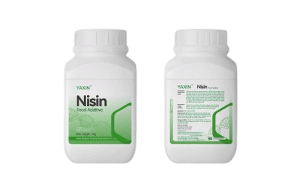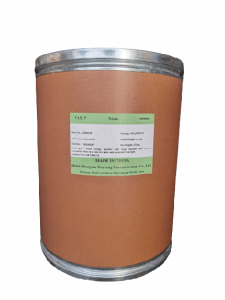Tel:+8618231198596

News
 CONTACT
CONTACT
 CONTACT
CONTACT
- Linkman:Linda Yao
- Tel: +8618231198596
- Email:linda.yao@dcpharma.cn
- Linkman:CHARLES.WANG
- Department:Overseas
- Tel: 0086 0311-85537378 0086 0311-85539701
News
Current Position:
Home >
News
>The antimicrobial action of ε-Polylysine hydrochloride in low-pH food systems
The antimicrobial action of ε-Polylysine hydrochloride in low-pH food systems
TIME:2024-10-23
Understanding Low-pH Food Systems
Low-pH foods are characterized by their acidity, typically having a pH level below 4.6. This acidity results from natural fermentation processes or the addition of acidifying agents such as vinegar or citric acid. While low pH can suppress the growth of many spoilage organisms and pathogens, certain bacteria, including Listeria monocytogenes, Staphylococcus aureus, and some yeasts and molds, can still thrive in these environments. Consequently, the preservation of low-pH foods requires the incorporation of effective antimicrobial agents to enhance safety and quality.
The Role of ε-Polylysine Hydrochloride
Antimicrobial Properties: ε-Polylysine hydrochloride is a cationic biopolymer produced through the fermentation of Streptomyces species. Its structure enables it to effectively disrupt bacterial cell membranes, leading to cell lysis and death. Research has demonstrated that ε-Polylysine exhibits broad-spectrum antimicrobial activity against a variety of foodborne pathogens and spoilage microorganisms, including those capable of surviving in low-pH conditions.
Efficacy in Acidic Environments: One of the notable advantages of ε-Polylysine hydrochloride is its stability and effectiveness in low-pH environments. Studies have shown that ε-Polylysine maintains its antimicrobial properties even at pH levels as low as 3.0, making it suitable for use in acidic foods. This resilience allows it to inhibit the growth of spoilage microorganisms and pathogens, thus enhancing food safety.
Mechanism of Action: The primary mechanism of action for ε-Polylysine involves its electrostatic interaction with negatively charged bacterial cell membranes. Once bound, it disrupts the integrity of the membrane, leading to leakage of intracellular components and ultimately cell death. Additionally, ε-Polylysine can interfere with cellular metabolism by inhibiting protein and nucleic acid synthesis, further enhancing its antimicrobial efficacy.
Synergistic Effects with Other Preservatives: ε-Polylysine can work synergistically with other preservatives, such as organic acids (e.g., citric acid, acetic acid), to enhance overall antimicrobial effectiveness in low-pH food systems. This combination can lead to a more significant reduction in microbial populations and improved shelf life, providing food manufacturers with a powerful tool for product preservation.
Implications for Food Preservation
Extended Shelf Life: The incorporation of ε-Polylysine hydrochloride in low-pH food products can significantly extend their shelf life by inhibiting microbial growth. This is particularly beneficial for products like pickles, sauces, and dressings, where extended freshness is essential for consumer satisfaction.
Improved Food Safety: By effectively controlling spoilage microorganisms and pathogens, ε-Polylysine enhances the safety of low-pH foods. This reduction in microbial load helps prevent foodborne illnesses, which is a primary concern for consumers and manufacturers alike.
Consumer Acceptance: As consumers increasingly demand clean-label products with natural ingredients, ε-Polylysine serves as an appealing option due to its natural origin and safety profile. Its use in low-pH foods can align with market trends favoring natural preservatives, helping manufacturers meet consumer expectations.
Challenges and Considerations
Despite its numerous advantages, the application of ε-Polylysine hydrochloride in low-pH food systems is not without challenges. Determining the optimal concentration for different food matrices is essential to balance antimicrobial effectiveness with sensory attributes. Additionally, food manufacturers must navigate regulatory considerations and ensure compliance with safety standards when incorporating ε-Polylysine into their products.
Conclusion
ε-Polylysine hydrochloride represents a valuable antimicrobial agent for enhancing the safety and quality of low-pH food systems. Its stability and effectiveness in acidic environments, coupled with its broad-spectrum antimicrobial activity, make it an attractive option for food manufacturers seeking to improve food preservation. As the demand for natural and safe food products continues to rise, the integration of ε-Polylysine into low-pH food formulations offers a promising solution for extending shelf life, enhancing safety, and meeting consumer preferences. Continued research into its applications and mechanisms of action will further solidify its role in the future of food preservation.
- Tel:+8618231198596
- Whatsapp:18231198596
- Chat With Skype







